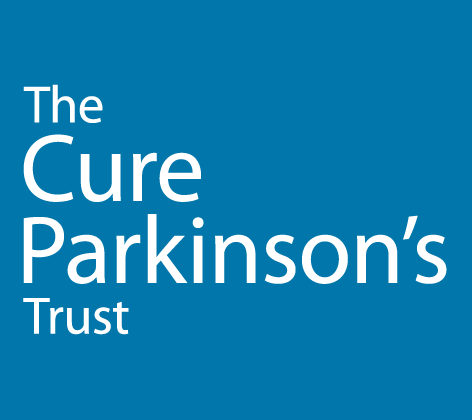HYPE?
Media portrayal:
HOPE?
Scientific interpretation:
Tracking serotonin in the earliest stages of Parkinson’s
Original article: Serotonergic pathology and disease burden in the premotor and motor phase of A53T α-synuclein parkinsonism: a cross-sectional study, Lancet Neurology: June 19, 2019.
The takeaway
A study using brain imaging in people carrying the rare genetic mutation (A53T SNCA in the alpha synuclein gene) who do not have a Parkinson’s diagnosis has shown that changes in the serotonin system occur before alterations are observed in the dopamine neurons.
Why is it important?
It highlights the importance of tracking changes in other neurochemicals, such as serotonin, as a means of better understanding the premotor phase of Parkinson’s.
%
IMPACT
- Novelty 90%
- Proximity 90%
- Deliverability 70%
Impact Opinion
“This is an exciting result – not only for what it can tell us about certain individuals with Parkinson’s, but also because it potentially provides us with a powerful new tool for identifying and tracking individuals at risk of developing the condition. The individuals involved in this study have a very rare genetic mutation which heightens their risk of developing PD, so it will be interesting to see if this early serotonin dysfunction can also be detected in other ‘at risk’ groups. That would certainly increase the utility of the test, and expand out knowledge of the condition greatly.”
Background
One of the challenges in understanding what causes Parkinson’s and how it develops is getting to grips with the earliest changes that take place in the brain before any movement problems appear. Since these motor symptoms, typically tremor for many people, are what prompts referral to a clinician who may then diagnose Parkinson’s, it is virtually impossible to identify people who will go on to develop the movement disorder before they actually do. Efforts are being made to develop techniques that identify so called “premotor” symptoms, such as loss of the sense of smell, and sleeping difficulties in a way that could help predict those individuals at risk of developing PD.
Another approach to this problem is to work with people with a known genetic mutation associated with familial Parkinson’s. Although the majority of genetic mutations have low penetrance, that is, a person may carry it but they may never actually develop Parkinson’s, there is one mutation which does have a very high penetrance: the A53T SNCA mutation. This mutation in the gene for alpha synuclein – the main protein which forms clumps and damages neurons in Parkinson’s – was first identified in families in Sicily and Greece, in whom the condition appeared earlier and progressed faster to severe movement (as well as cognitive) problems.
Based on post mortem studies, we have known for many years that Parkinson’s affects other parts of the brain involved in functions such as sleep and mood, before it affects the dopamine producing cells involved in movement. Serotonin is one of these neurochemicals which is affected early on, but few direct tests of this in people who have not yet developed Parkinson’s have been carried out.
The details
This collaborative work between the UK, Greece and Italy, recruited 14 people with an A53T SNCA mutation, two cohorts of 25 and 40 people with idiopathic Parkinson’s respectively who had been previously scanned, and 25 people with no neurological problems. Seven individuals in the mutation group actually had a Parkinson’s diagnosis, while the other seven did not have any symptoms at the time of testing. All of these individuals were assessed neurologically over a 7 day period. All the participants underwent PET scanning to allow an assessment of both dopamine as well as serotonin function across the whole brain.
The asymptomatic mutation carriers had normal dopaminergic function, but compared to healthy individuals, they showed evidence of reduced serotonergic function in different parts of the brain including those involved in sleep and mood regulation, as well as regions involved in movement. All the individuals with the mutation who had a Parkinson’s diagnosis, except one who had received their diagnosis in the last year, had more extensive serotonin deficits as well as the dopamine loss in the movement centres which is known to occur in Parkinson’s.
In addition, the extent of the serotonergic dysfunction, as it was measured by PET scanning, correlated with the extent of movement problems, making this serotonin marker an additional potentially useful way of tracking progression and disease severity in the clinic and in trials in the future.
Next steps
Similar work has been carried out in LRRK2 mutation carriers. In that study, asymptomatic LRRK2 carriers have elevated serotonin function, while LRRK2 carriers who had Parkinson’s showed reductions. There are clear differences between genetic mutations and their effects on the brain, so more work is needed to link the early changes that can occur as a result of genetic mutations and in overt Parkinson’s, and brain imaging focusing on the serotonin system. It will also be useful to know whether this method can be used to predict who may develop Parkinson’s in the future and when.
Original article: Wilson H, Dervenoulas G, Pagano G, Koros C, Yousaf T, Picillio M, Politis M. June 19, 2019. Serotonergic pathology and disease burden in the premotor and motor phase of A53T α-synuclein parkinsonism: a cross-sectional study



